-
 Bitcoin
Bitcoin $112200
0.96% -
 Ethereum
Ethereum $4310
0.64% -
 XRP
XRP $2.978
4.28% -
 Tether USDt
Tether USDt $0.9999
-0.02% -
 BNB
BNB $877.9
0.29% -
 Solana
Solana $215.6
6.68% -
 USDC
USDC $0.9997
-0.02% -
 Dogecoin
Dogecoin $0.2387
7.54% -
 TRON
TRON $0.3316
0.73% -
 Cardano
Cardano $0.8633
4.49% -
 Hyperliquid
Hyperliquid $50.46
7.52% -
 Chainlink
Chainlink $23.01
3.82% -
 Ethena USDe
Ethena USDe $1.001
-0.01% -
 Sui
Sui $3.469
2.94% -
 Stellar
Stellar $0.3750
4.79% -
 Bitcoin Cash
Bitcoin Cash $587.2
-2.71% -
 Avalanche
Avalanche $25.48
4.50% -
 Hedera
Hedera $0.2258
3.79% -
 UNUS SED LEO
UNUS SED LEO $9.548
0.05% -
 Litecoin
Litecoin $112.7
-1.24% -
 Cronos
Cronos $0.2527
-2.26% -
 Toncoin
Toncoin $3.098
-0.03% -
 Shiba Inu
Shiba Inu $0.00001287
4.08% -
 Polkadot
Polkadot $4.037
1.46% -
 Uniswap
Uniswap $9.567
3.02% -
 Dai
Dai $0.9997
-0.01% -
 Ethena
Ethena $0.7735
5.26% -
 World Liberty Financial
World Liberty Financial $0.2077
-7.48% -
 Monero
Monero $271.3
0.38% -
 Aave
Aave $302.8
1.35%
Which indicator is better, BOLL or ATR? Which one should I choose to measure volatility?
Bollinger Bands visually signal volatility and overbought/oversold conditions, while ATR provides a numerical measure for setting stop-losses and position sizes in crypto trading.
May 21, 2025 at 07:07 pm
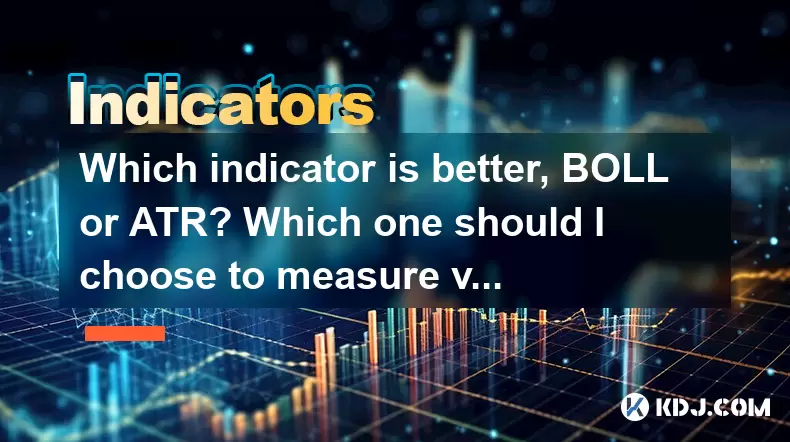
When it comes to measuring volatility in the cryptocurrency market, two popular indicators often come into discussion: Bollinger Bands (BOLL) and Average True Range (ATR). Each indicator has its unique strengths and applications, making the choice between them dependent on your specific trading needs and strategies. In this article, we'll delve into the details of both BOLL and ATR, comparing their functionalities, advantages, and best use cases to help you decide which one might be better suited for measuring volatility in your crypto trading.
Understanding Bollinger Bands (BOLL)
Bollinger Bands, developed by John Bollinger, are a technical analysis tool that consists of a set of three bands plotted two standard deviations (positively and negatively) away from a simple moving average (SMA) of a security's price. The bands expand and contract based on the volatility of the price.
- Middle Band: This is typically a 20-day simple moving average.
- Upper Band: This is the middle band plus two standard deviations.
- Lower Band: This is the middle band minus two standard deviations.
Bollinger Bands are particularly useful for identifying overbought and oversold conditions in the market. When the price touches the upper band, it might indicate that the asset is overbought, and when it touches the lower band, it might suggest the asset is oversold. Additionally, the bands' widening or narrowing can signal increasing or decreasing volatility, respectively.
Understanding Average True Range (ATR)
Average True Range, developed by J. Welles Wilder, is a measure of market volatility. It considers the true range of an asset, which is the greatest of the following: the current high minus the current low, the absolute value of the current high minus the previous close, and the absolute value of the current low minus the previous close. The ATR is then a moving average, typically over 14 periods, of the true ranges.
- Calculation: ATR = (Previous ATR * 13 + Current True Range) / 14
ATR is primarily used to gauge the volatility of a security over a specified period. A high ATR value indicates high volatility, while a low ATR value suggests low volatility. This indicator is useful for setting stop-loss orders and determining the size of trades based on the current market volatility.
Comparing BOLL and ATR in Measuring Volatility
When it comes to measuring volatility, Bollinger Bands and ATR approach the task differently, yet both provide valuable insights.
Bollinger Bands give a visual representation of volatility through the widening and contracting of the bands. They also help traders identify potential reversal points by signaling overbought or oversold conditions. This makes BOLL particularly useful for traders who rely on visual cues and who want to combine volatility analysis with trend analysis.
ATR, on the other hand, provides a numerical value that can be directly used in trading decisions, such as setting stop-loss orders or determining position sizes. It is straightforward and does not rely on visual interpretation, making it ideal for algorithmic trading or for traders who prefer quantitative data.
Use Cases for Bollinger Bands
Bollinger Bands are versatile and can be used in various trading scenarios:
Trend Identification: When the bands are widening, it indicates that the market is becoming more volatile, which often accompanies a strong trend. Conversely, narrowing bands suggest a decrease in volatility, which might signal a consolidation period or a potential trend reversal.
Breakout Trading: Traders often use BOLL to identify potential breakout opportunities. A breakout above the upper band might signal the start of a new uptrend, while a breakout below the lower band might indicate the beginning of a downtrend.
Mean Reversion Strategies: Since BOLL can identify overbought and oversold conditions, traders can use these signals to implement mean reversion strategies, buying when the price touches the lower band and selling when it touches the upper band.
Use Cases for ATR
ATR is equally versatile and can be applied in several ways to enhance trading strategies:
Setting Stop-Loss Orders: Traders can use ATR to set dynamic stop-loss orders. For instance, a common method is to set the stop-loss at a multiple of the current ATR value from the entry price. This allows the stop-loss to adjust based on market volatility.
Position Sizing: ATR can help determine the size of a position based on the current level of volatility. Higher volatility might warrant smaller position sizes to manage risk, while lower volatility might allow for larger positions.
Volatility-Based Entry and Exit: Traders can use ATR to time their entries and exits. For example, entering a trade when volatility is low and exiting when it increases can be a strategy to capitalize on volatility shifts.
Choosing Between BOLL and ATR
The choice between Bollinger Bands and ATR depends largely on your trading style and specific needs:
If you prefer visual analysis and want to combine volatility with trend analysis, Bollinger Bands might be the better choice. They provide a clear visual representation of volatility and can help identify potential entry and exit points based on overbought and oversold conditions.
If you prefer numerical data and need to set specific parameters for your trades, ATR might be more suitable. It offers a straightforward way to measure volatility and can be directly integrated into trading algorithms or used to set stop-losses and position sizes.
Practical Application of BOLL and ATR in Crypto Trading
To illustrate how these indicators can be applied in the cryptocurrency market, let's look at some practical examples:
Using Bollinger Bands in Bitcoin Trading:
- Suppose you're monitoring Bitcoin's price and notice that the bands are widening, indicating increasing volatility. You might decide to enter a trade if you believe a strong trend is about to start.
- If Bitcoin's price touches the lower band, you might consider it oversold and buy, expecting a potential price rebound.
Using ATR in Ethereum Trading:
- If you're trading Ethereum and the ATR value is high, indicating high volatility, you might set a wider stop-loss to account for larger price swings.
- Conversely, if the ATR value is low, you might enter a larger position, as the risk of significant price movement is lower.
Frequently Asked Questions
Q1: Can I use both BOLL and ATR together in my trading strategy?Yes, combining Bollinger Bands and ATR can provide a more comprehensive view of market conditions. You can use BOLL to identify potential entry and exit points based on overbought and oversold conditions, while using ATR to set stop-losses and determine position sizes based on current volatility.
Q2: How often should I recalculate the ATR value in my trading?The frequency of recalculating the ATR value depends on your trading timeframe. For short-term trading, you might recalculate it daily or even intraday. For longer-term trading, weekly or monthly recalculations might be sufficient. Adjust the period length of the ATR according to your trading strategy.
Q3: Are there any limitations to using Bollinger Bands for volatility analysis?Yes, one limitation of Bollinger Bands is that they can sometimes produce false signals, especially in highly volatile markets. Additionally, the bands might remain wide for extended periods during strong trends, making it challenging to identify overbought or oversold conditions accurately.
Q4: Can ATR be used for all types of cryptocurrencies, including those with low liquidity?While ATR can be applied to any cryptocurrency, its effectiveness might be reduced in markets with very low liquidity. In such cases, the true range might not accurately reflect the actual volatility due to infrequent trading and large price gaps between trades. It's essential to consider the liquidity of the asset when using ATR.
Disclaimer:info@kdj.com
The information provided is not trading advice. kdj.com does not assume any responsibility for any investments made based on the information provided in this article. Cryptocurrencies are highly volatile and it is highly recommended that you invest with caution after thorough research!
If you believe that the content used on this website infringes your copyright, please contact us immediately (info@kdj.com) and we will delete it promptly.
- Worldcoin's Wild Ride: Treasury Tactics and Price Gains, a New York Minute
- 2025-09-09 14:25:15
- Hotcoin Lists Luxury Travel Token (LTT): Your Ticket to Crypto-Fueled Luxury?
- 2025-09-09 14:25:15
- Household Debt: Peeking into the 2025 Crystal Ball
- 2025-09-09 12:25:15
- Bitcoin Core, Censorship, and the Ordinals Leader: A Showdown Looms?
- 2025-09-09 12:25:15
- Bitcoin, Solana, and Hacks: Navigating the Crypto Minefield, the New York Way
- 2025-09-09 12:30:12
- AI Models, Bitcoin Trend, and the September Shock: What's the Deal?
- 2025-09-09 12:30:12
Related knowledge
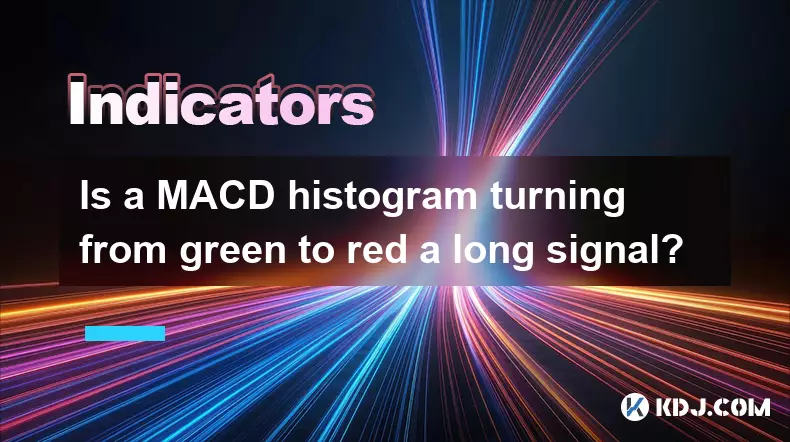
Is a MACD histogram turning from green to red a long signal?
Sep 09,2025 at 01:54pm
Understanding the MACD Histogram in Crypto Trading1. The MACD (Moving Average Convergence Divergence) histogram is a visual representation of the diff...
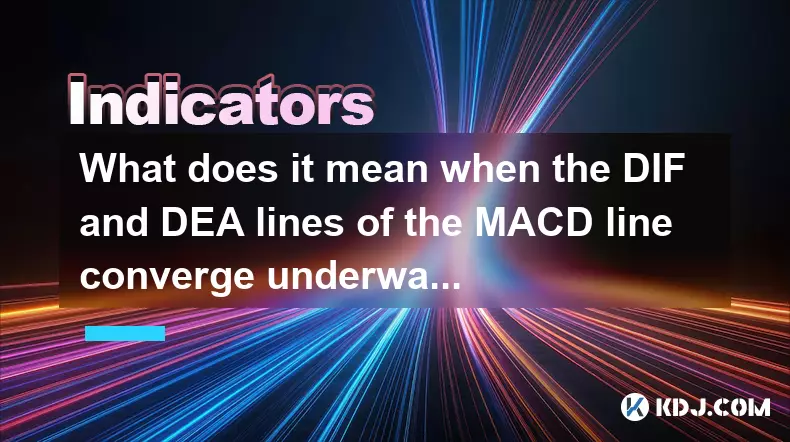
What does it mean when the DIF and DEA lines of the MACD line converge underwater?
Sep 09,2025 at 07:55am
Understanding MACD Components in Bearish Territory1. The MACD indicator consists of three elements: the DIF (Difference), DEA (Signal line), and the M...
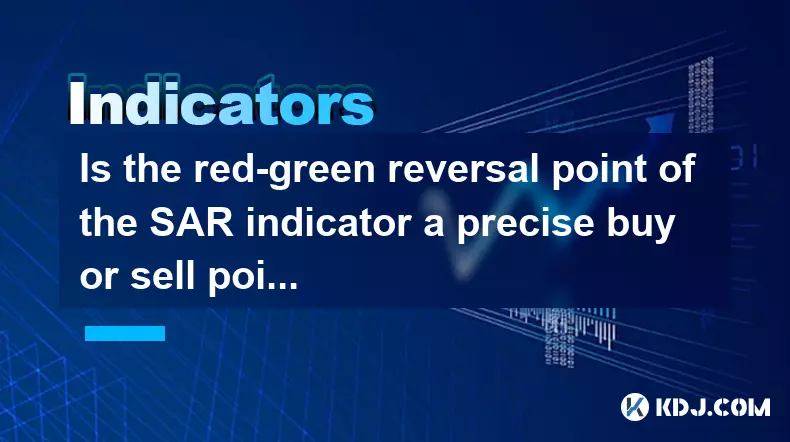
Is the red-green reversal point of the SAR indicator a precise buy or sell point?
Sep 09,2025 at 11:18am
Understanding the SAR Indicator in Cryptocurrency TradingThe SAR (Stop and Reverse) indicator, developed by J. Welles Wilder Jr., is a popular tool us...
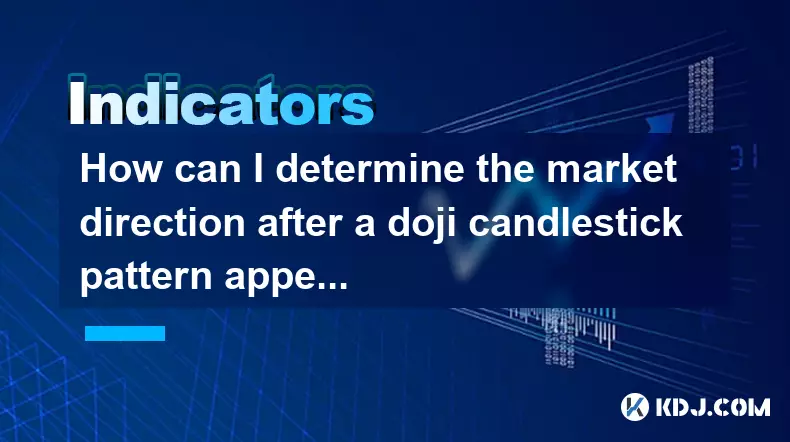
How can I determine the market direction after a doji candlestick pattern appears?
Sep 09,2025 at 05:37am
Understanding the Doji Candlestick in Crypto Markets1. The doji candlestick is a critical formation that signals indecision between buyers and sellers...
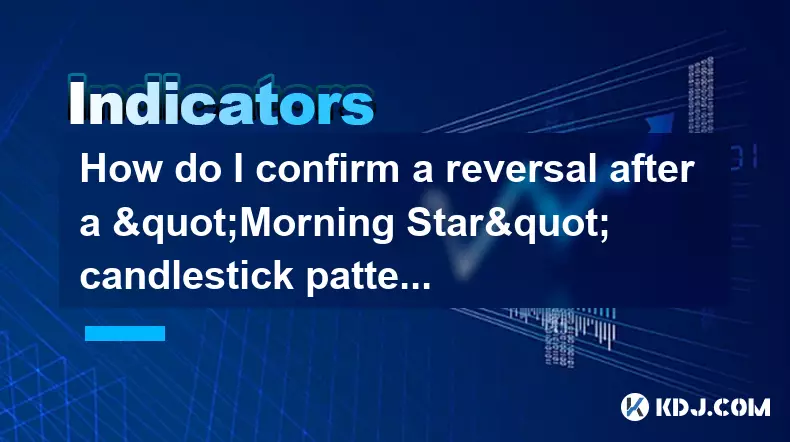
How do I confirm a reversal after a "Morning Star" candlestick pattern appears?
Sep 09,2025 at 05:19am
Understanding the Morning Star Candlestick Pattern1. The Morning Star is a bullish reversal pattern that typically forms at the end of a downtrend. It...
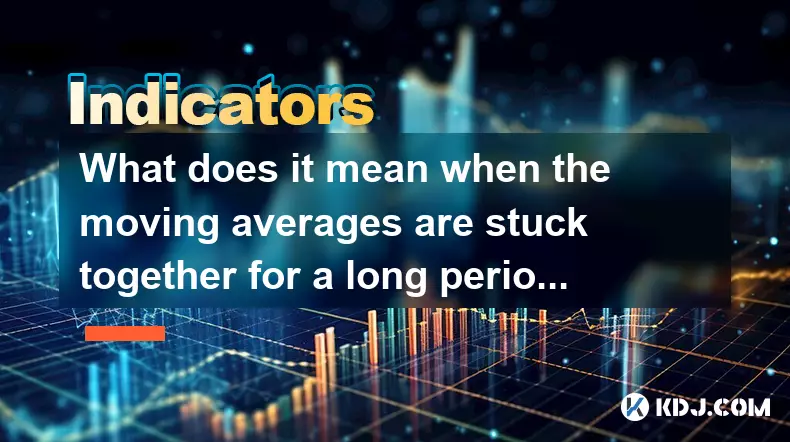
What does it mean when the moving averages are stuck together for a long period of time?
Sep 09,2025 at 02:19pm
What Happens When Moving Averages Cluster Together?When moving averages remain tightly grouped over an extended duration, it signals a phase of market...

Is a MACD histogram turning from green to red a long signal?
Sep 09,2025 at 01:54pm
Understanding the MACD Histogram in Crypto Trading1. The MACD (Moving Average Convergence Divergence) histogram is a visual representation of the diff...

What does it mean when the DIF and DEA lines of the MACD line converge underwater?
Sep 09,2025 at 07:55am
Understanding MACD Components in Bearish Territory1. The MACD indicator consists of three elements: the DIF (Difference), DEA (Signal line), and the M...

Is the red-green reversal point of the SAR indicator a precise buy or sell point?
Sep 09,2025 at 11:18am
Understanding the SAR Indicator in Cryptocurrency TradingThe SAR (Stop and Reverse) indicator, developed by J. Welles Wilder Jr., is a popular tool us...

How can I determine the market direction after a doji candlestick pattern appears?
Sep 09,2025 at 05:37am
Understanding the Doji Candlestick in Crypto Markets1. The doji candlestick is a critical formation that signals indecision between buyers and sellers...

How do I confirm a reversal after a "Morning Star" candlestick pattern appears?
Sep 09,2025 at 05:19am
Understanding the Morning Star Candlestick Pattern1. The Morning Star is a bullish reversal pattern that typically forms at the end of a downtrend. It...

What does it mean when the moving averages are stuck together for a long period of time?
Sep 09,2025 at 02:19pm
What Happens When Moving Averages Cluster Together?When moving averages remain tightly grouped over an extended duration, it signals a phase of market...
See all articles
























































































